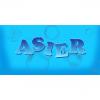Hello Everyone,
I have a need of a very wide range of fovs supported by my world camera, from 0.02(~1.14º) radians to 0.785(~45º)
The thing is, when I am applying a between 30º and 45º to even more, all goes quite well, but when I go down 30º, my textures begin distorting so hard, exponentially when i go lower on degrees, and it reaches to apply mipfilter almost for everything.
I dont understand why is happening this terrible behaviour or if there is any way of fixing different of change my camera behaviour because it should cost me to spend a lot of time, so any help should be appreciated.
The attached images are both from the same point of view and it only changes the fov.
I will always apologize for my insulting bad english. ![]()
Cheers






